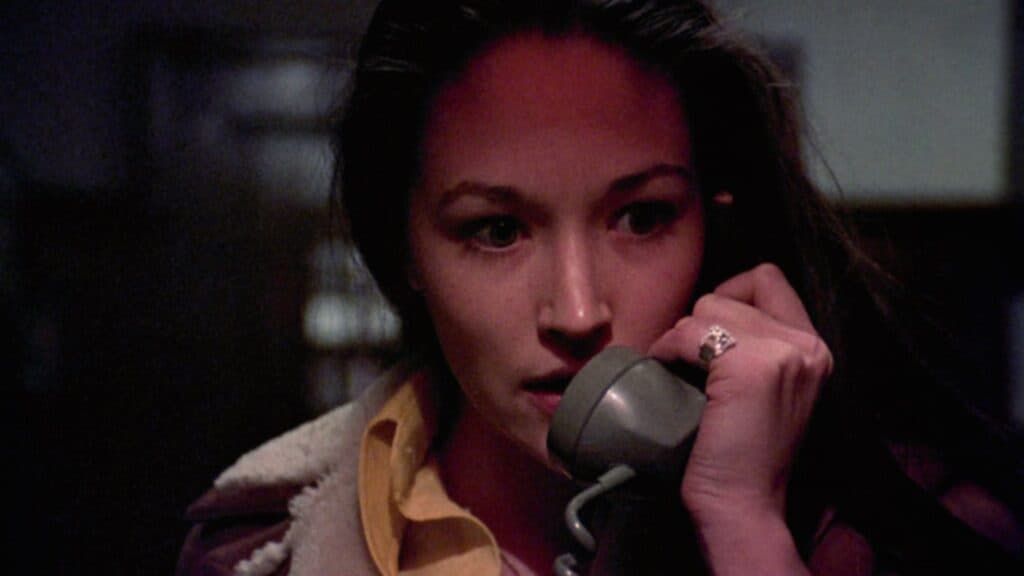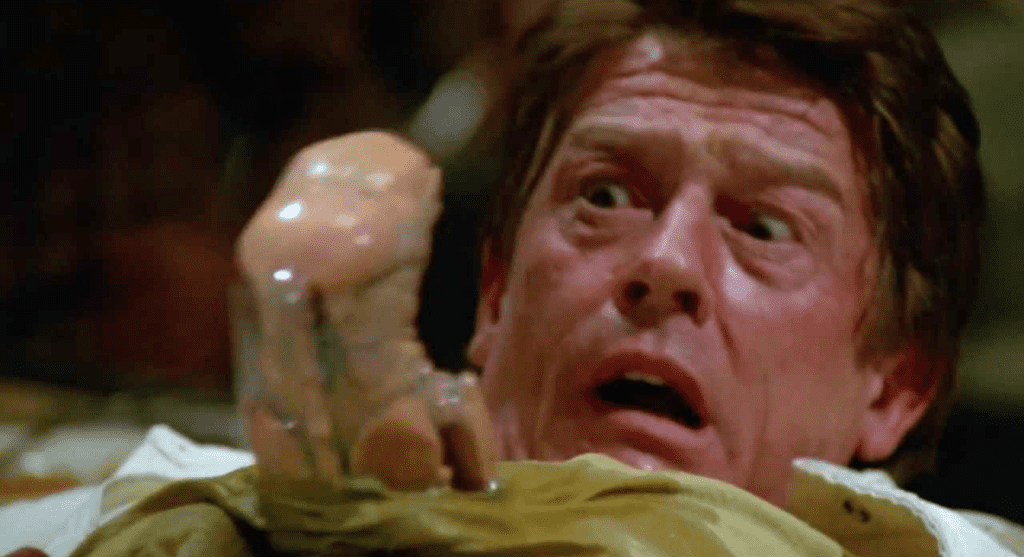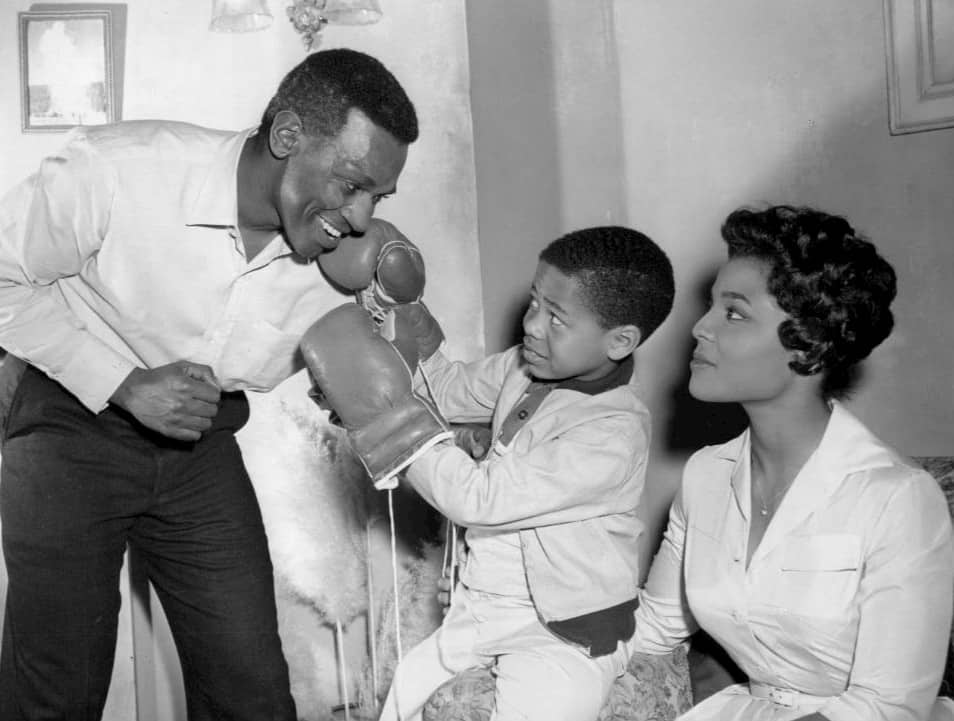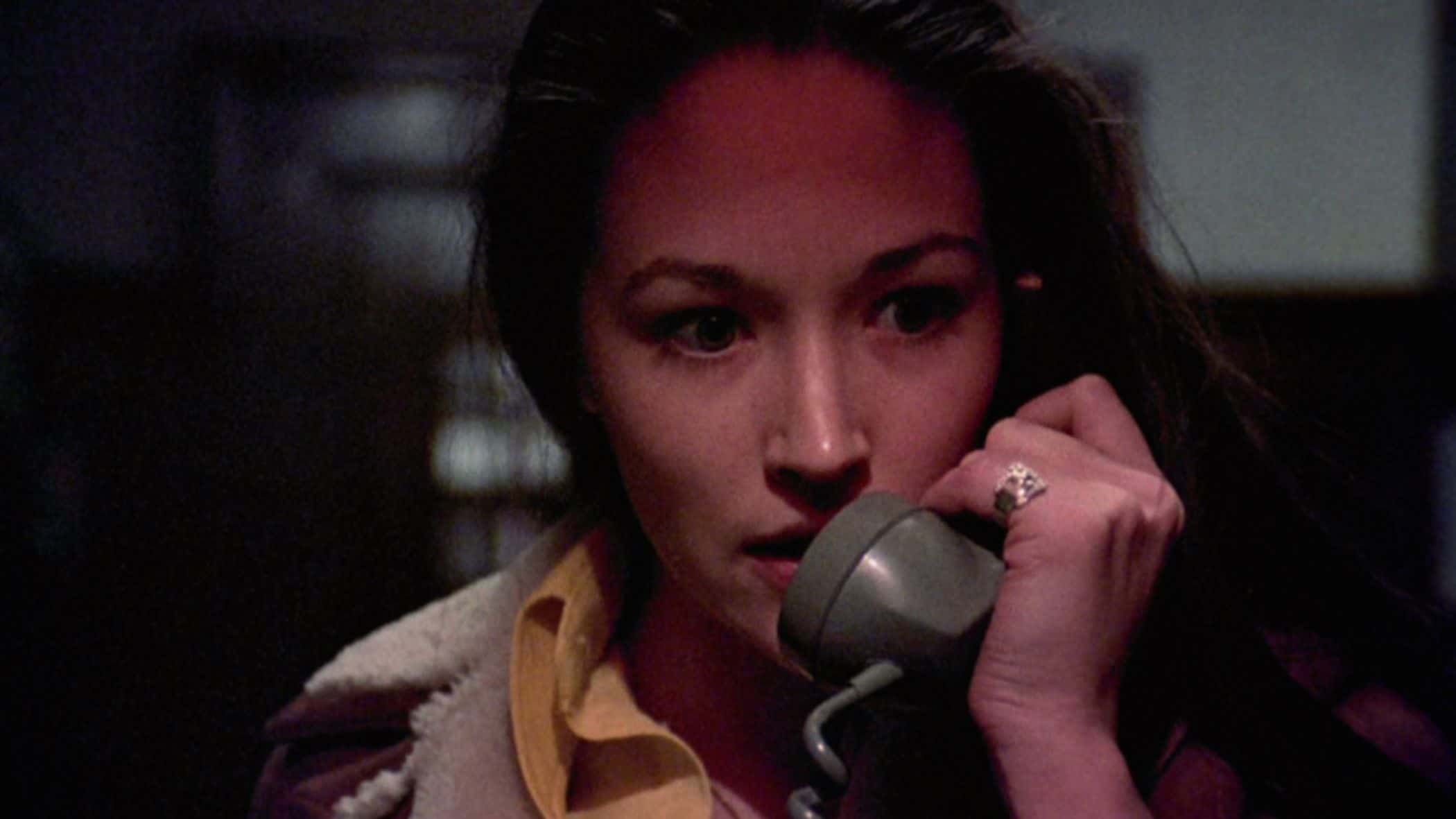FALL 2022 SEMESTER OF CLASSES
Horror fans love fall, and with good reason (not that we need an excuse for horror). But there is more reason to celebrate, as Miskatonic Institute returns to live classes! All three city branches, London, New York, and Los Angeles will welcome students in from the proverbial and literal cold to feast on the warmth of exciting and informative lectures.
But to our students around the world: do not despair! Miskatonic Online is now a permanent branch. There will be a live broadcast on Zoom, where students can ask their questions live; and for those unable to tune in, the online classes will be made available for the rest of their broadcast month, on our Vimeo channel.
The Miskatonic Institute of Horror Studies will have fifteen classes on a wide range of topics, delving into all corners of horror studies, from the sublime to the strange to the terrifying.
Miskatonic London takes a look at the monstrous-feminine through the eyes of women in AN EXPLORATION OF THE EVOLUTION OF THE MONSTROUS-FEMININE, with instructor Bruna Foletto Lucas. Robert Dee takes us on a harrowing and layered journey through CHILD ABDUCTION IN THE HORROR FILM. There’s something uniquely frightening about Mummys, and Rebecca Bruce will talk to us about why in BENEATH THE BANDAGES: THE HORROR BEHIND THE MUMMY’S CURSE. And Catherine Lester looks at one of the most unintentionally (or so we assume) scary stories about … bunnies? As the season concludes with BLOODY BUNNIES: HOW WATERSHIP DOWN TRAUMATISED A GENERATION.
Miskatonic New York dives right into September with a look at possession stories and their reflections on gender roles in SHE-DEVILS: SEX AND GENDER IN CONTEMPORARY DEMONIC POSSESSION AND EXORCISM FILMS, with Patricia Grisafi. Kelly Boner will lecture on another horror topic in which women are the primary victims, in I’M AFRAID TO ANSWER THE TELEPHONE: THE SEMIOTICS OF GENDER AND THE TELEPHONE IN HORROR. In time for Thanksgiving, we have a proverbial fireside chat with American horror filmmaker Douglas Buck, in a discussion on representations of the dysfunctional family. And we make way for the holiday season with a discussion of zombies and the nature (and horror) of employment in CAN’T STOP, WON’T STOP: ZOMBIES AND THE HORRORS OF WORK, with instructor David Bering-Porter.
Miskatonic Los Angeles begins in October, with a masterclass with legendary horror filmmaker Tom Holland (Fright Night, Thinner). We get creepy-crawly in November as Kevin Lafferty gives us lessons on LITTLE HORRORS: PARASITES IN HOLLYWOOD AND THEIR REAL COUNTERPARTS. And we close off the holiday season with Claire Donner’s investigation of how we view what’s true and what isn’t in horror, in AN EXPLORATION OF AUDIENCE CREDULITY IN RELATIONSHIP TO THE FACTS AND FICTIONS SURROUNDING “THE AMITYVILLE HORROR”.
Miskatonic Online opens with one of the most lauded television shows and it’s not-infrequent dives into horror, as instructor Tonia Ransom discusses SOCIAL COMMENTARY IN THE TWILIGHT ZONE. We’ll go back in time a little more with Luke Robinson’s examination of the gothic woman’s film and the patriarchy in THE HORROR OF THE VOID IN THE SPIRAL STAIRCASE. Jean-Ray Charles will take us back to early theatrical origins of horror in THE ANGUISH AND UNLEASHING OF THE BODY AT THE GRAND GUIGNOL. And we round out the online season back in the present, with Bollywood and witches in SHIFTING REPRESENTATIONS OF THE WITCH IN HINDI HORROR CINEMA: FROM SEXPLOITATION TO SOCIAL JUSTICE, with instructor Saira Chhibber.
Tickets & Passes Now Available
FALL 2022 CLASSES
MISKATONIC LONDON
Branch Director: Josh Saco

Miskatonic London offers monthly classes and a discounted full semester pass. For our Fall 2022 semester, admission to individual classes is £8 concession, £10 advance, & £12 door. A full semester pass including all four classes curated by Miskatonic London, is £35. All classes take place live at The Horse Hospital, Colonnade, Bloomsbury, London.
Tuesday September 13th 7:00pm BST
AN EXPLORATION OF THE EVOLUTION OF THE MONSTROUS-FEMININE
Instructor: Bruna Foletto Lucas
From the amoral primeval mother in Aliens (1986), the vampire in Dracula’s Daughter (1936), the witch in Carrie (1976), and the animal in Cat People (1942), to the deadly femme castratrice in I Spit on Your Grave (1978), the aged psychopath in What Ever Happened to Baby Jane? (1962) and castrating mother in Psycho (1960) – the monstrous-feminine has been a staple in Western horror cinema since its beginning. In horror scholarship, the monstrous-feminine has been explored in a myriad of arguments, most of which stem from Freudian theories. Psychoanalytical theories argue that the female monster is born from sexual difference and is used as a way for male filmmakers to negotiate and eventually soothe their fears regarding the female body. A comprehensive (but not exhaustive) investigation of the monstrous-feminine confirms most of these theories, but leaves one question unanswered: what happens with the monstrous-feminine when directed by a woman? It is precisely this question that this talk aims to examine.
Wednesday, October 26th 7:00pm BST
CHILD ABDUCTION IN THE HORROR FILM
Instructor: Robert Dee
From Lang’s M to Derrickson’s The Black Phone, the spectre of the child murdering stranger has long haunted cinema. Aside from adult concerns for child safety, scenes of ‘stranger danger’ in horror and related media reignite repressed magical thinking and our childhood fears of the dangerous adult Other. Unlike mature adults, these abductors (or Danger Strangers) – The Child Catcher, Pennywise the Clown, Rose the Hat, The Grabber – are more akin to grown-up children, possessing supernatural talents and/or childlike characteristics that act as magical lures to entrap their victims, making them all the more unsettling. This lecture will present a loose structural model that represents 13 recurring stages in child abduction scenes, and broaden out the investigation to look at both Freud’s essay on the uncanny and the Jungian concept of the puer aeterna, touching on the Trickster archetype and Pan, and relate these ideas to the character of the Danger Stranger and what it means to us as spectators.
Tuesday November 8th 7:00pm GMT
BENEATH THE BANDAGES: THE HORROR BEHIND THE MUMMY’S CURSE
Instructor: Rebecca Bruce
If you have ever seen an ancient Egyptian mummy, apart from in a film, it is likely you saw one in a museum. There is usually some information attached to the exhibit, a note where the mummy was found, their age, perhaps even a name. However, have you ever wondered; how did it arrive there? If it was ‘acquired’ during the nineteenth century, likely it was either ‘legally stolen’ (through the loophole of colonialism) or illegally smuggled. Either way: you are looking at a stolen corpse on display for all to see. This lecture aims to unravel the history of mummies and the ‘mummy’s curse’ by focusing on their treatment and perception in the nineteenth-century. It will focus on the consequences of the mummy-trade in nineteenth-century Britain focusing on how mummies were perceived and treated during this time. There are four specific areas that will be examined; mummy pits (mass tombs and Victorian descriptions of pits, visual culture); mummies on display (mummy unwrapping parties); Victorian mummy Gothic fictions (by Bram Stoker, H. P. Lovecraft, Arthur Conan Doyle and Louisa May Alcott); and mummies in media (early horror films featuring mummies and their connection to museums).
Tuesday December 13th 7:00pm GMT
BLOODY BUNNIES: HOW WATERSHIP DOWN TRAUMATISED A GENERATION
Instructor: Catherine Lester
The 1978 animated film Watership Down, adapted from Richard Adams’ 1972 novel, is now widely known as one of the most frightening children’s films ever made, its subject matter of animated rabbits and U classification (upgraded to PG as of August 2022) supposedly not adequately preparing young viewers and their guardians for its mature tone and disturbing imagery. But is it really the case that audiences were not forewarned of the film’s material, and where did the perception that it is a typical, all-ages family film come from? This talk begins by examining the production, marketing, classification, critical reception, paratexts and television broadcasting strategies of the film to trace the history of how Watership Down‘s ‘traumatic’ legacy came to be. It will then consider how the film’s reputation informed the production, marketing and reception of the 1999 and 2018 television adaptations, especially with regard to how these versions attempted to tone down their horrific aspects and reassure viewers of their suitability for children, the extent to which they were successful in this aim, and what this has to do with their lack of lasting cultural legacy compared with the film.
MISKATONIC NEW YORK
Branch Director: Claire Donner

Miskatonic New York offers monthly classes and a discounted full semester pass. For our Fall 2022 semester, admission to individual classes is US$15. A limited number of full semester passes will also be available, for US$50. Passes will only be available for purchase in advance online. Tickets can be bought online in advance, and any remaining will be sold at the door (cash only). All classes take place live at the Film Noir Cinema, 122 Meserole Avenue, Brooklyn.
Tuesday September 13th 7:00pm EDT
SHE-DEVILS: SEX AND GENDER IN CONTEMPORARY DEMONIC POSSESSION AND EXORCISM FILMS
Instructor: Patricia Grisafi
Since the 1973 release of THE EXORCIST, the demonic possession and exorcism sub-genre continues to be unflaggingly popular. Dozens of possession-themed films have been released in the last fifteen years alone. One might think that demonic possession or exorcism films are all about religion; after all, exorcism represents a reconciliation with God. But instead, such films illustrate the fraught relationship between women and sociopolitical power structures, with the woman’s body as the battleground. This talk will survey possession-themed films that reflect gender-based cultural anxieties around puberty, the trauma of sexual assault, the pathologization of female sexual expression, and misogynstically-motivated psychiatric diagnoses such as hysteria.
Tuesday October 18th 7:00pm EDT
I’M AFRAID TO ANSWER THE TELEPHONE: THE SEMIOTICS OF GENDER AND THE TELEPHONE IN HORROR
Instructor: Kelly Boner
“THE CALL IS COMING FROM INSIDE THE HOUSE” is an oft-quoted line that reveals a relationship between horror, the home, and gender. From the muttering prank calls of Black Christmas (1974) to the frantic opening scene of Scream (2022), the telephone is often a source of intrusion and terror inflicted upon women in places culturally coded as feminine: places where, in theory, they should be safe). In this lecture, we will examine the historical relationship between gender and the telephone, specifically the telephone as an instrument of femininity and domesticity. Through this historical grounding, we will explore a selection of 20th century American horror films (with exceptions from Italy, Korea, Japan, and the early 21st century) to dissect the ways in which the phone is weaponized against women specifically in arenas in which they are supposedly blameless or safe. By interrogating this relationship, we can start to construct an understanding of the phone as a site of technological anxiety while we simultaneously deconstruct our understanding of how women become victims, and why, in these films.
Tuesday November 8th 7:00 EST
MISKATONIC PRESENTS HOME IS WHERE THE HORROR IS: A CONVERSATION WITH DOUGLAS BUCK
Instructor: Douglas Buck
For some, Thanksgiving is a time for gratitude and togetherness; for others, it’s a stark reminder of hidden abuses, hypocrisy, and historic violence. We hope you’ll join us for a heaping helping of pre-holiday horror in this unique conversation with firebrand filmmaker Douglas Buck, where we’ll discuss his searing critiques of the American family unit. Buck’s harrowing anthology film FAMILY PORTRAITS: AN AMERICAN TRILOGY inspired standing ovations and outright fainting in festival audiences, and anyone who has seen it knows why. In his other work, from the blackly comic short AFTER ALL, to his THEATER BIZARRE segment THE ACCIDENT, to his intimate reimagining of Brian DePalma’s SISTERS with Chloë Sevigny, Buck demonstrates a profound understanding of childhood alienation, family secrets, and the cyclical nature of abuse.
We invite you to join us as we turn our focus on the family—just in time for the holidays.
Tuesday December 13th 7:00pm EST
CAN’T STOP, WON’T STOP: ZOMBIES AND THE HORRORS OF WORK
Instructor: David Bering-Porter
Zombies never sleep, never stop. At the heart of what makes the zombie such a lasting terror in our cultural imagination is its relentlessness. Fast or slow, it propels itself toward us with a mindless determination, it is motivated by a ceaseless drive to move, to consume, and to spread. The zombie is a reflection of life at its worst, reduced to simple needs and impulses. But how did the zombie become a symbol of bare life? Across all stages of its evolution, the zombie reflects the contradictions around race, labor, and value that extend from its origin into the present day, revealing important insights into the always on, flexible work environments of the neoliberal present. Exploring the question of why the zombie can’t stop leads us to question, why can’t we?
MISKATONIC LOS ANGELES
Branch Director: Amy Searles

Miskatonic Los Angeles offers monthly classes and a discounted full semester pass. For our Fall 2022 semester, admission to individual classes is US$15. A limited number of full semester passes will also be available, for US$35. Passes will only be available for purchase in advance online. Tickets can be bought online in advance, and any remaining will be sold at the door (cash only). All classes take place live at The Philosophical Research Society, 3910 Los Feliz Blvd, Los Angeles.
Tuesday October 25th 7:30pm PST
LIVE FROM MISKATONIC: IN CONVERSATION WITH TOM HOLLAND
Instructors: Tom Holland, Mark Miller
Join us and host Mark Miller as he delves into horror history with director and screenwriter Tom Holland, the man behind Fright Night, Child’s Play, The Langoliers, and Thinner.
Tuesday November 29th 7:30pm PST
LITTLE HORRORS: PARASITES IN HOLLYWOOD AND THEIR REAL COUNTERPARTS
Instructor: Kevin Lafferty
Wuchereria causes your scrotum to swell like a grapefruit, Leishmania can eat your nose, and people infected with Pulex speak willingly of self-amputation. It should be no surprise that we evolved both fear and disgust as a way to avoid being infected by parasites. Parasites are why we think poop stinks and why we find a symmetrical face beautiful. Parasites were with us before we evolved as a species, and have since left their mark on our history and many of our cultural practices, and traditions. They also make great villains. Fear of the rabies virus likely led to notable legends about the creatures and monsters that inspired Shelley and Stoker. This lecture will consider how parasites are far more fascinating than how they are represented by the entertainment industry. Then, we’ll go out for sushi.
Wednesday December 7th 7:30pm PST
AN EXPLORATION OF AUDIENCE CREDULITY IN RELATIONSHIP TO THE FACTS AND FICTIONS SURROUNDING “THE AMITYVILLE HORROR”
Instructor: Claire Donner
The claim that a movie is “based on a true story” can be irresistible to audiences, whether or not it is substantiated. This marketing device is all the more successful when it piggybacks on pre-existing beliefs held by a target audience. This talk will examine the folkloric “Amityville Horror” as a prime example of the power of stories that, while unverifiable, intersect with the existing faith and beliefs of its receptive public. We will discuss elements of the DeFeo murder case that have been utilized to scaffold the largely fictional franchise, and the archetypal potency of core texts and films. The talk will draw on supporting theory put forth by figures such as William James and Carl Jung, to build greater understanding of the power of faith and belief as it relates to the continued consumption of the “Horror”—even as it reaches into the deep sea, and the far reaches of outer space.
MISKATONIC ONLINE
Branch Co-Directors: Shelagh Rowan-Legg & Graham Skipper

Online branch classes will first broadcast live on Zoom, on the first Tuesday of the month. Within the few days following the live class, the lecture will be made available for rental on our Vimeo channel for the remainder of that month. Tickets for the live class will be US$12, and US$10 for VOD rental on Vimeo. A branch pass will be available for the live broadcasts only at US$40. Please note that tickets for the live broadcasts and the Vimeo VOD are not interchangeable.
Tuesday September 6th 7:30pm EDT
SOCIAL COMMENTARY IN THE TWILIGHT ZONE
Instructor: Tonia Ransom
The Twilight Zone is one of the best-known shows of all time. Although it’s often classified as a science fiction series, many argue that a majority of the episodes constitute horror as well. In fact, The Twilight Zone’s most popular episodes lean heavily into the horrific as a means of social commentary that are sadly still relevant today. This class will explore classic episodes such as “The Eye of the Beholder”, “The Monsters Are Due on Maple Street”, “The Invaders”, “The Big Tall Wish”, “He’s Alive”, “The Shelter”, “The Obsolete Man”, and the controversial episode “The Encounter”. Beauty standards, themes of xenophobia, and echoed sentiments of today about “woke” entertainment with its depiction of Black characters in a non-racial story, and cautionary tales of what awaits us if our democracy is threatened in a political climate that very closely matches that of the 1960s. Finally, we’ll discuss “The Encounter”, and how that episode tackles racism and the effects of war head-on, in a way that was so controversial at the time that “The Encounter” was one of the few episodes that did not re-air for three decades.
Tuesday October 4th 7:30pm EDT
THE HORROR OF THE VOID IN THE SPIRAL STAIRCASE
Instructor: Luke Robinson
In a disturbing facial close-up of Helen (Dorothy McGuire) from the Robert Siodmak’s 1946 classical Hollywood film The Spiral Staircase the film’s viewer sees a serial killer’s mental projection of an erased area—a void—onto Helen’s face. In this this shot, taken from the serial killer’s point of view, the film viewer is aligned with the serial killer’s misogynist and violent view of women. To establish and conceptualise the nature of the horror of the void that violently marks Helen’s face in Siodmak’s film this class considers a number of theories of the void and erasure, including that of the vanishing point in Renaissance art and also Gilles Deleuze’s arguments about facial effacement in his cinema books. Based on this discussion, we, in this class, explore how the void—as representative of patriarchal violence—is a structuring principle of what is, and what is not, visible in The Spiral Staircase. We also learn how to identify acts of resistance to visible and invisible forms of patriarchal violence that are a source of horror for Helen and the other female characters in this film.
Tuesday November 1st 7:30pm EDT
THE ANGUISH AND UNLEASHING OF THE BODY AT THE GRAND GUIGNOL
Instructor: Jean-Charles Ray
A precursor to gore cinema, the Grand Guignol theatre exposes, through its form and themes, an ambiguous relationship to the body as a strange mechanic that must be restrained and controlled while demanding unbridled explosions. In the Paris of “La Belle Epoque”, the Grand Guignol was situated at the confluence of bourgeois and popular cultures, scientific innovations and social transformations. It drew from it a fascination mixed with fear towards the contradictory and complementary dynamics of control and unleashing, as well as a deep anguish both towards the authorities, whose shackles crush the individuals with an implacable and inhuman rigor and towards the potential monster which hides in everyone and threatens to emerge if not tamed. This lecture will explore this dimension that cinema has largely inherited and focus on explaining how the Grand Guignol evolved from a subversive naturalistic theatre to a festival of horrific and erotic thrills, and how its social and cultural context Guignol perspires through its plays and irrigated modern horror after its demise.
Tuesday December 6th 7:30pm EST
SHIFTING REPRESENTATIONS OF THE WITCH IN HINDI HORROR CINEMA: FROM SEXPLOITATION TO SOCIAL JUSTICE
Instructor: Saira Chhibber
The focus of this lecture is ostensibly on representations of the witch in contemporary Bollywood film. But it is also a discussion on how the supernatural as a genre is being used to challenge problematic gender codes and social conventions in South Asian popular cultures. Hindi popular cinema is in many respects unique in relation to other global cinemas, particularly in its historic reliance upon strictly proscribed guidelines for representations of women and a ‘good woman/bad woman’ binary. In Bollywood, this gender binary has been used to code socially acceptable behaviours that have privileged an imagined concept of India, one that is patriarchal, Hindu-centric and homogenous. Historically, the figure of the witch or churail as she is known in both Hindi and Urdu, has fit the context of this binary through her representation as a ‘bad woman’ who is inevitably punished for acting outside of filmic norms of gender behaviour. However, recent iterations of the witch in Hindi film productions, have seen a complete volte-face, as new witch films have represented the figure as a sympathetic protagonist and fighter for gender justice. Situating these films within socio-political, cultural and production contexts, it becomes apparent that there has been a rupture with the traditional gender paradigms that have historically sought to police and control women’s gender expression.
Tickets & Passes Now Available
Please note that all our in-person events will follow government guidelines with regards to health regulations and restrictions.
For further information, images or interview requests, contact The Miskatonic Institute at miskatonicihs[at]gmail.com.

